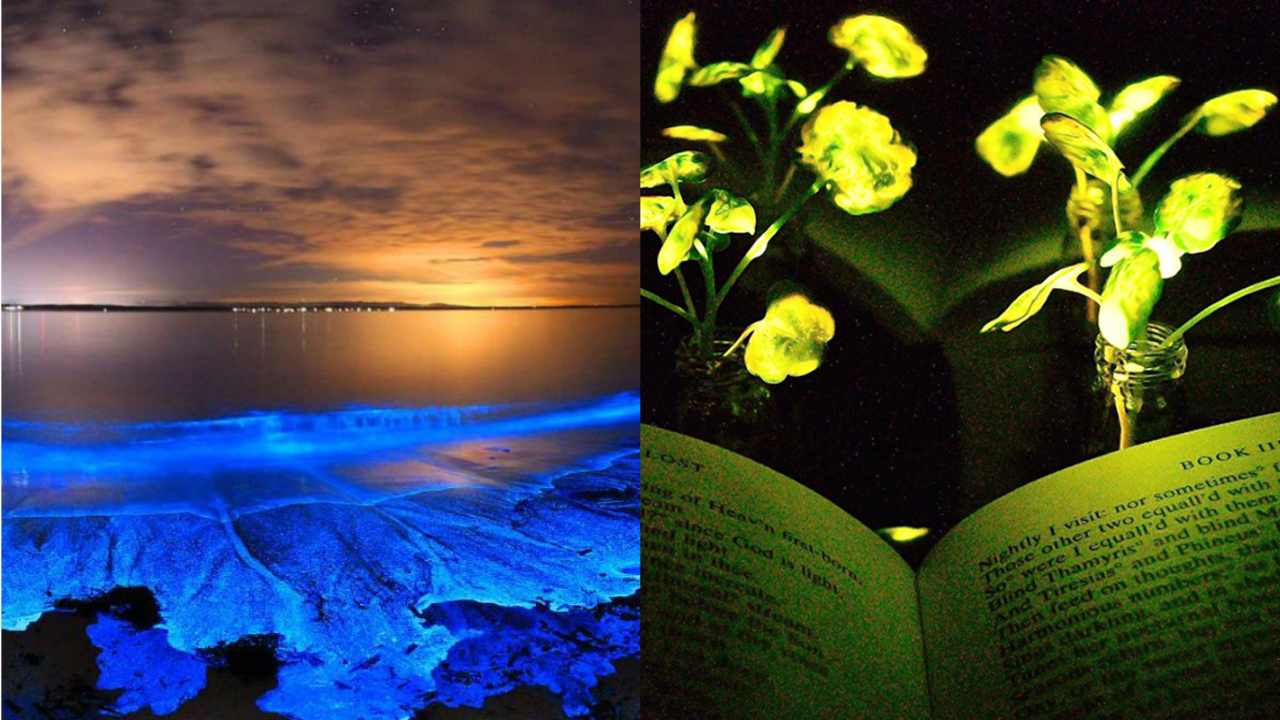These organisms can light up by them selves
Imagine walking along a beach at night and seeing the water light up with a beautiful blue glow or a forest where mushrooms shine with a soft green light. It’s not a miracle, those are Bioluminescent organisms and they would be a sustainable lighting solution for future. As a research scientist from San Francisco, Jamie Parker would find this topic especially as a natural phenomenon where living organisms produce light. Bioluminescent organisms are creatures that emit light through a chemical reaction inside their bodies. This process involves a substance called luciferin and an enzyme called luciferase. When these two react, they produce light without generating heat. This light can be seen in various forms of life, including bacteria, fungi, insects like fireflies, and many marine…
Imagine walking along a beach at night and seeing the water light up with a beautiful blue glow or a forest where mushrooms shine with a soft green light. It’s not a miracle, those are Bioluminescent organisms and they would be a sustainable lighting solution for future.
As a research scientist from San Francisco, Jamie Parker would find this topic especially as a natural phenomenon where living organisms produce light.
Bioluminescent organisms are creatures that emit light through a chemical reaction inside their bodies. This process involves a substance called luciferin and an enzyme called luciferase.
When these two react, they produce light without generating heat. This light can be seen in various forms of life, including bacteria, fungi, insects like fireflies, and many marine animals such as jellyfish and plankton.

How it is benefited for them
Each organism has evolved its own way to use bioluminescence, whether to attract mates, scare away predators, or camouflage in their environments.
In the depths of the ocean, where sunlight cannot penetrate, bioluminescence plays a vital role. Creatures such as the mauve stinger jellyfish illuminate their surroundings when disturbed, casting a mesmerizing waves of glowing light.
For instance, dinoflagellates, tiny planktonic organisms, can create entire bays of glowing water at night, a sight that has fascinated sailors and scientists alike for centuries.
Firefly beetles use their glowing abdomens to attract mates, while some deep-sea fish use bioluminescence to attract prey.
Scientific Research and Medical Applications
Beyond their natural beauty, bioluminescent organisms have revolutionized scientific research and medical technology.
Scientists have engineered proteins like Green Fluorescent Protein (GFP) from jellyfish, which allows researchers to track cellular activities in living organisms with unprecedented clarity.

This innovation has advanced fields from genetics to medicine, offering new insights into disease processes and treatment effectiveness.
In medical applications, bioluminescence plays a role in photodynamic therapy (PDT), where light-activated compounds derived from bioluminescent bacteria can selectively destroy cancer cells, offering a less invasive treatment option.

Revolutionizing the Lighting Industry
These organisms demonstrate nature’s ingenious way of producing light without electricity or heat. Unlike conventional lighting methods that rely on electricity, bioluminescent organisms generate light through biochemical processes involving luciferin and luciferase.
This biologically-driven approach not only minimizes energy consumption but also mitigates carbon emissions, offering a greener alternative for urban and indoor lighting.
Scientists are actively researching bioluminescence for its applications in sustainable lighting. By delving into the molecular mechanisms of bioluminescent reactions, researchers aim to harness these natural processes to create bioengineered light sources.
Imagine strolling through a city park illuminated by softly glowing trees or cycling down streets lined with bioluminescent plants. These envisioned urban landscapes could soon become a reality as bioluminescent technologies advance.
Beyond aesthetics, these light-emitting organisms offer practical solutions for reducing reliance on traditional lighting infrastructure, potentially transforming how cities and indoor spaces are illuminated at night.
Real-Time Experiences
In recent experiments, scientists have successfully engineered bioluminescent plants that emit light for several hours. These advancements not only showcase the potential of bioluminescence as a practical lighting solution but also highlight ongoing efforts to refine and scale these technologies for broader applications.

However, the use of bioluminescence in research raises ethical questions. Scientists must balance the benefits of understanding these organisms with the potential harm to their natural habitats.
Featured image credits: GOOD/Adobe






